Working Woodlands
Finger Lakes, NY (2020)
New York State’s woodland operations span a range of industries including logging, maple syrup, timber, and pulpwood that feed into 60,000 jobs and $5 billion annually to the state’s economy. In a seminar on rural landscape in Cornell’s Dept. of Landscape Architecture, I examined the operations and history of the Finger Lakes' public and private woodlands. The outcome: to better assess climate risks facing forests today and to create a toolbox to help public and private actors create a more resilient woodland landscape.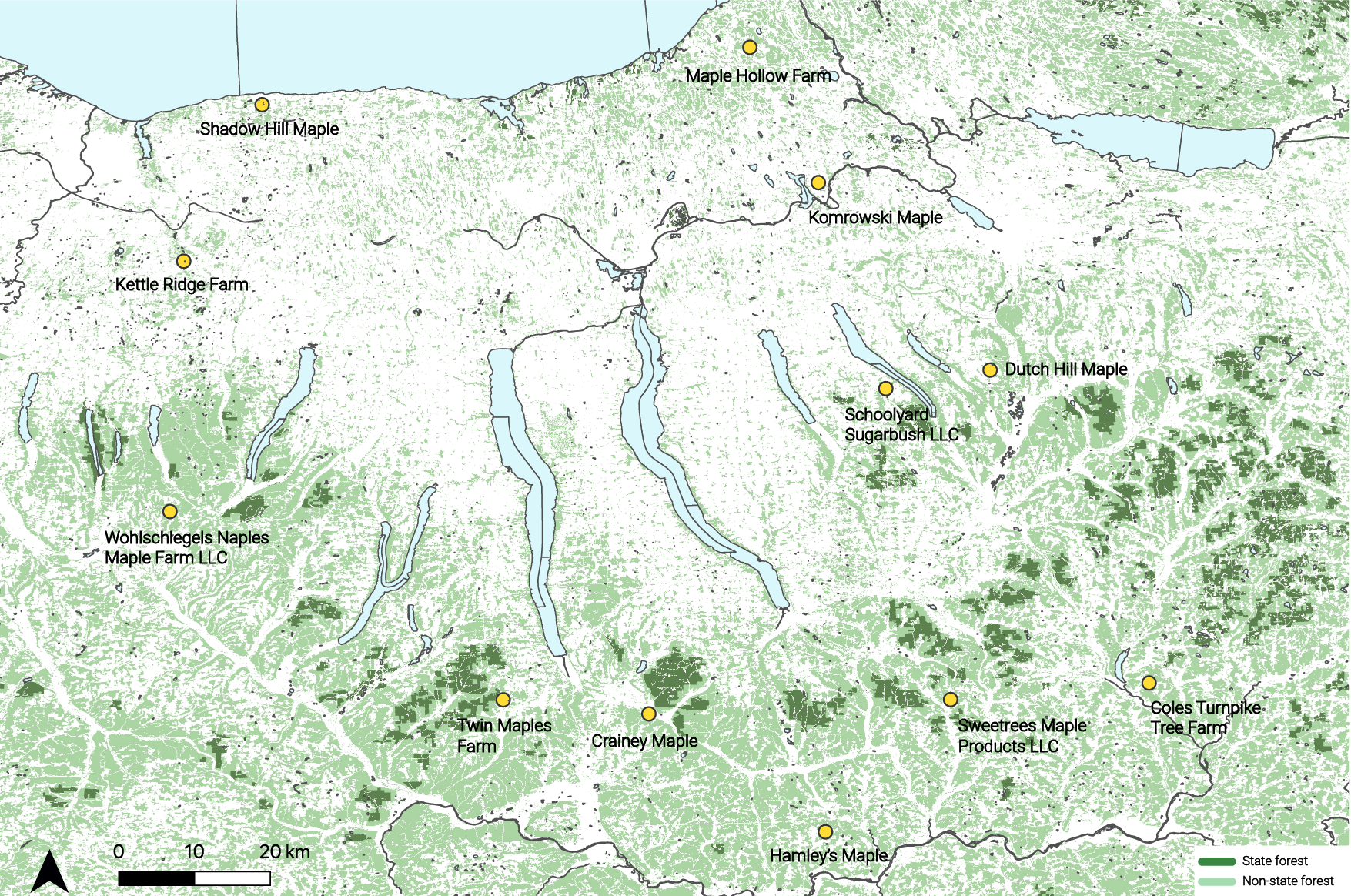
GIS Map of Maple Producers, Public & Private Forests in the Finger Lakes
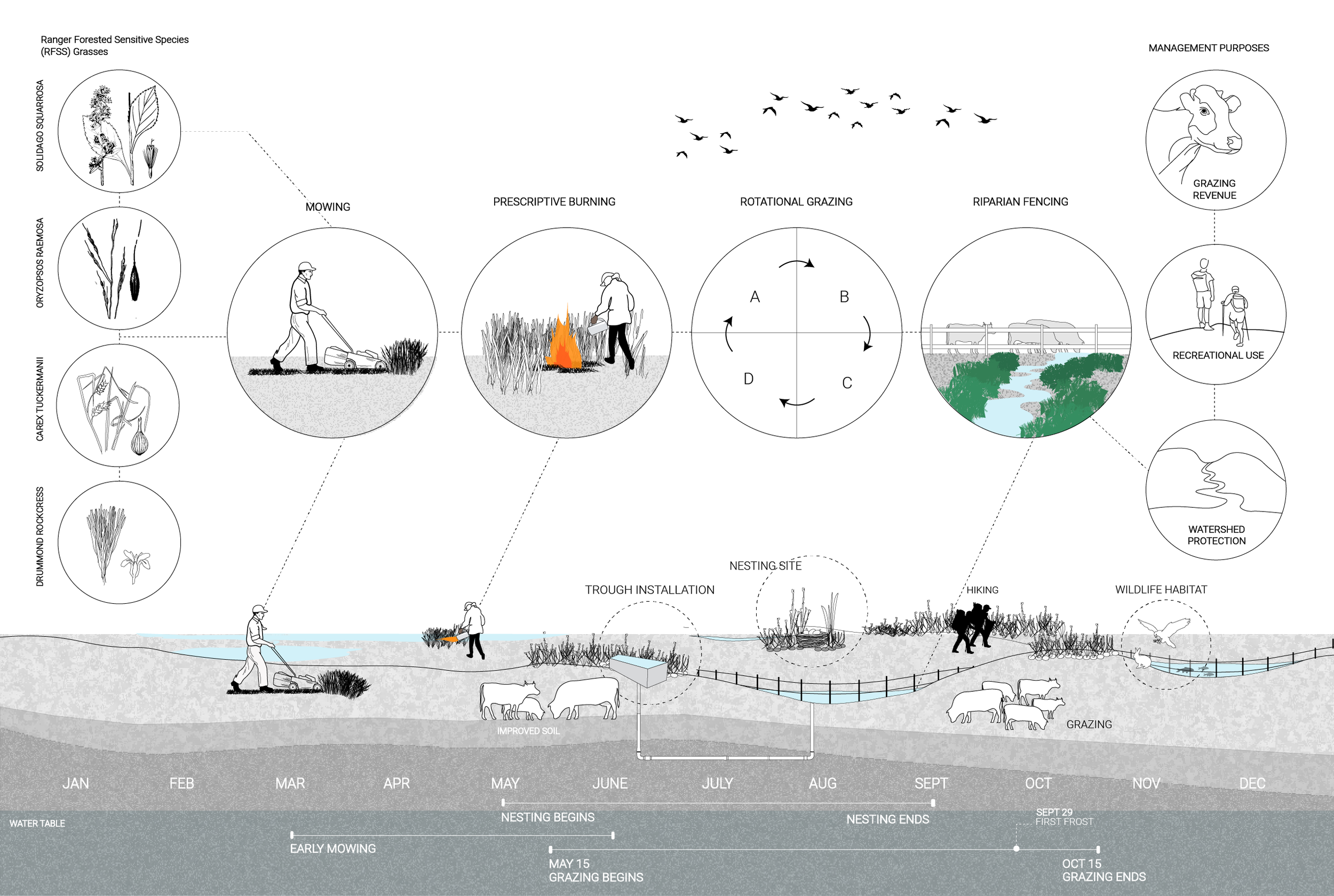
Operational Cycle of the Hector Grasslands, Finger Lakes National Forest
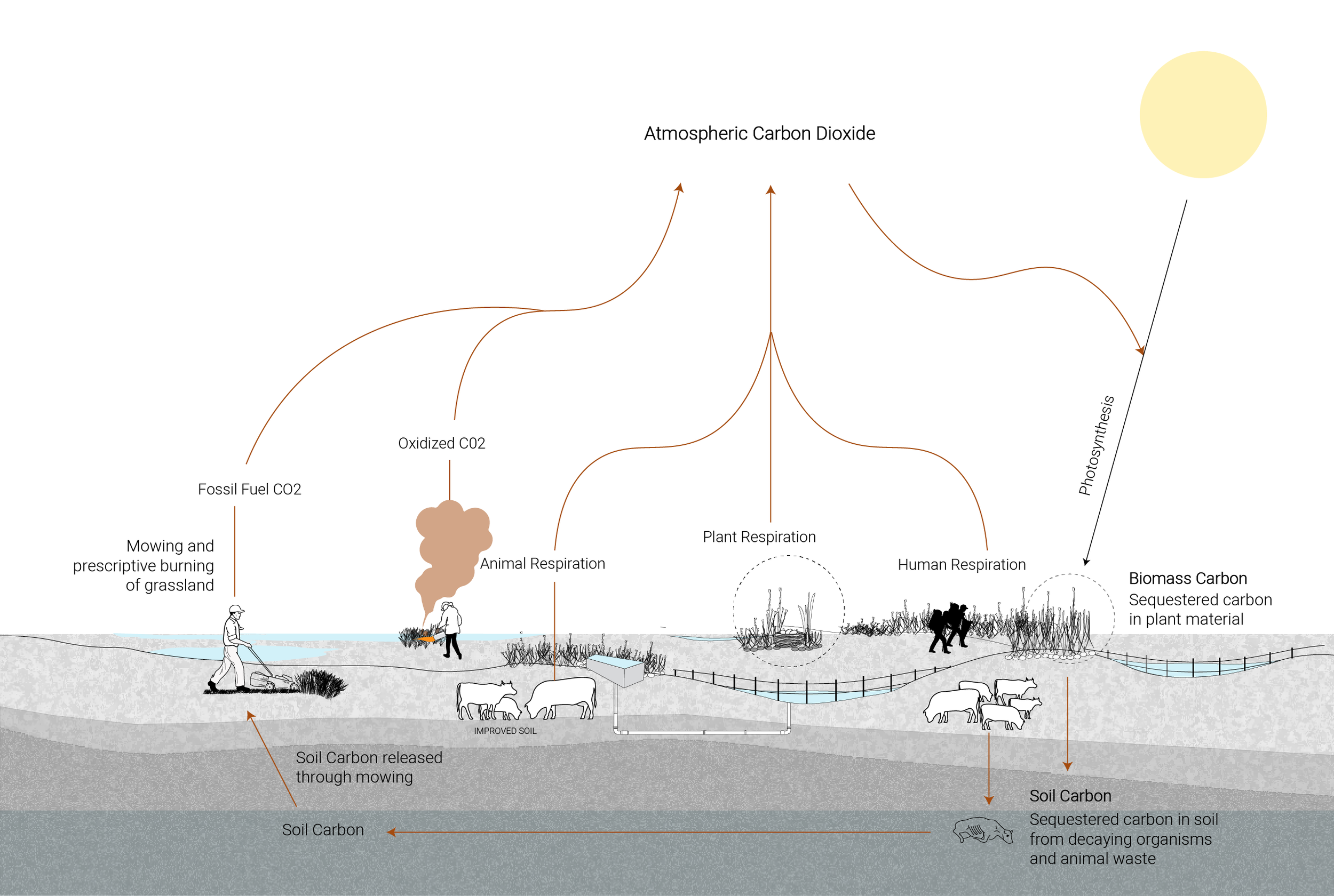
Carbon Cycle of the Hector Grasslands, Finger Lakes National Forest
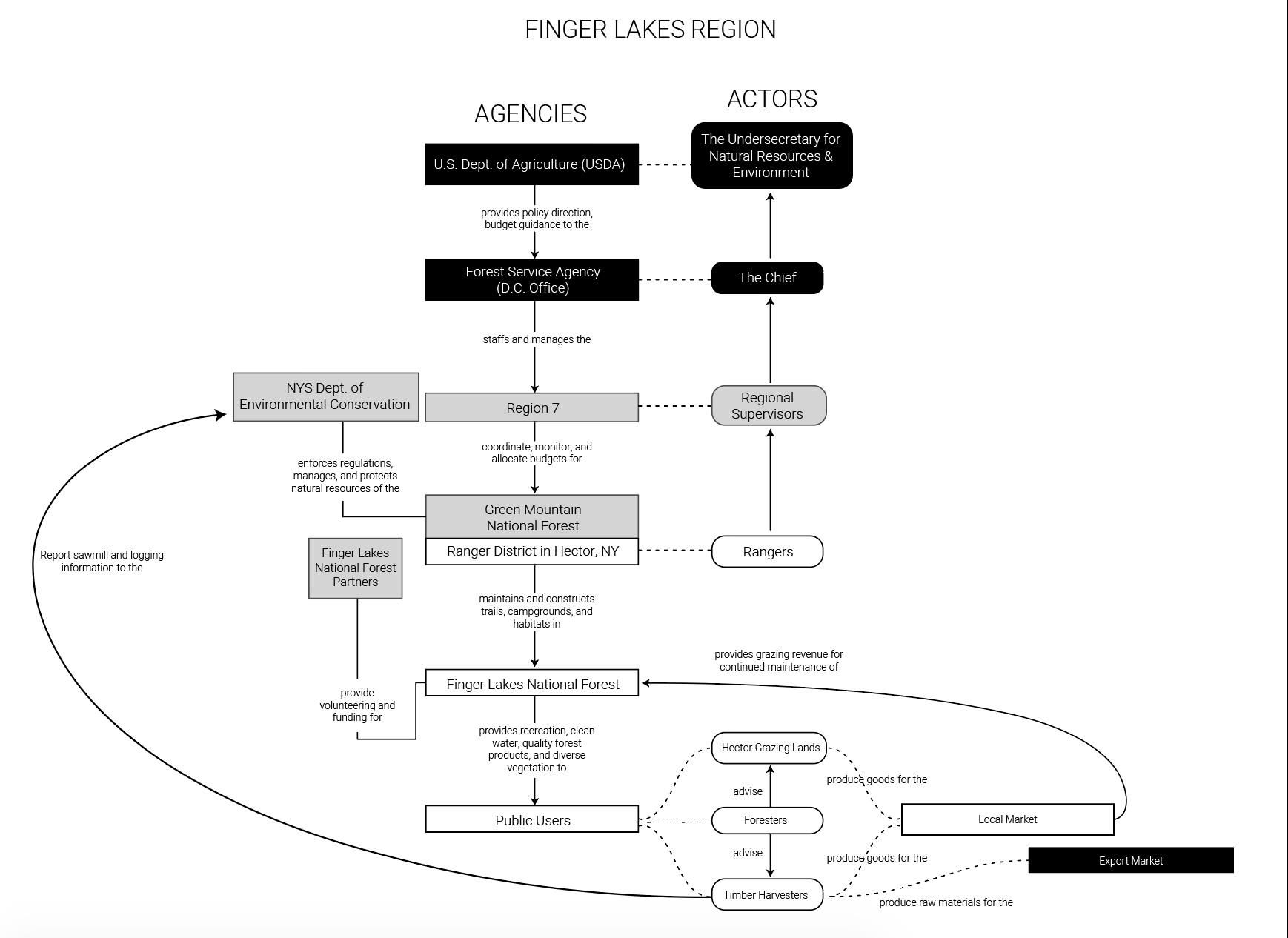
Actor-Network Diagram of Finger Lakes Region Woodlands
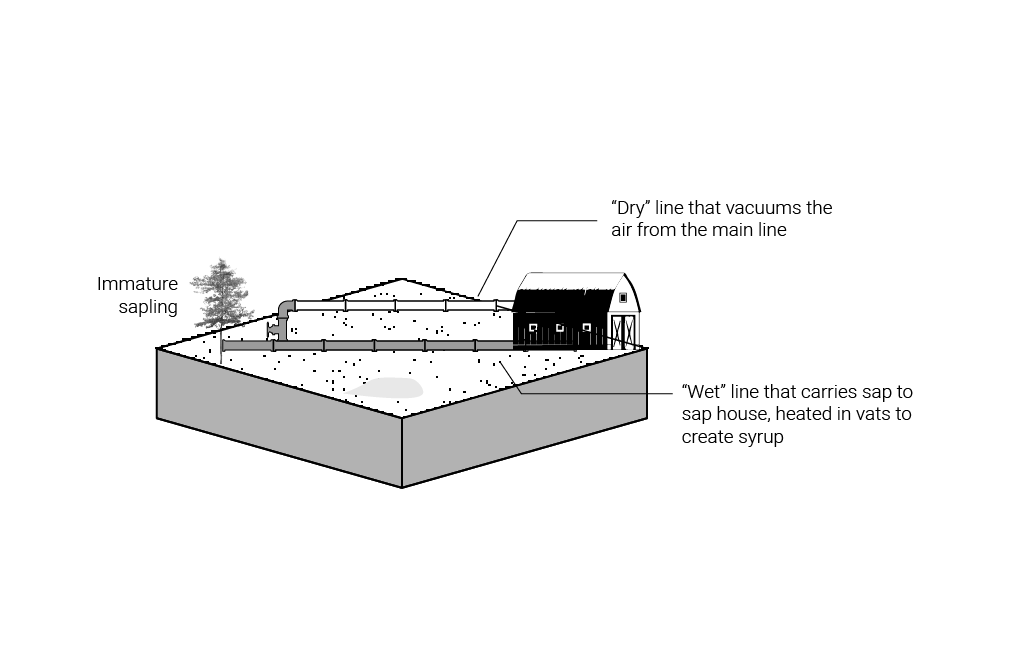
VACUUM PIPING. The vacuum tubing system applies suction to obtain sap stored in the depths of the trunk. The tubing flows directly from the young sapling into a lateral line that splits into the wet and dry tubes; the dry line takes in the air while the wet line transports the sap to the sap house. Vacuum piping technology can increase sap yields without damaging the tree.
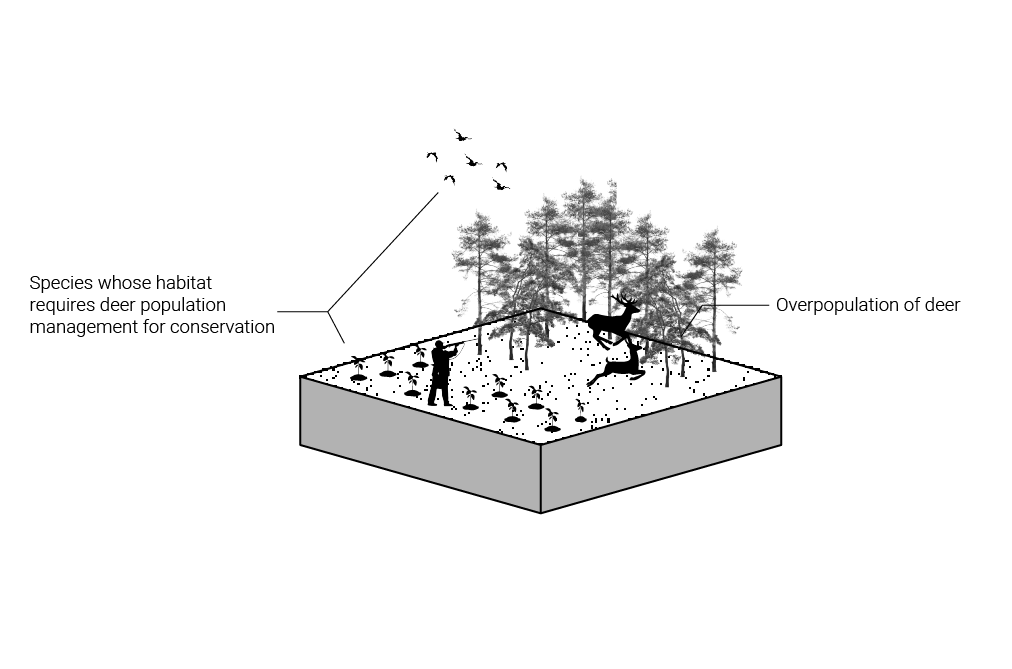
HUNTING FOR CONSERVATION. Hunting can further conservation by managing overpopulation of animals that can over-browse and threaten wildlife habitats. if a deer population surpasses what the landscape can sustain, an excess of seedlings and saplings are eaten. This presents challenges for forest regeneration and renders it more vulnerable to invasive species.
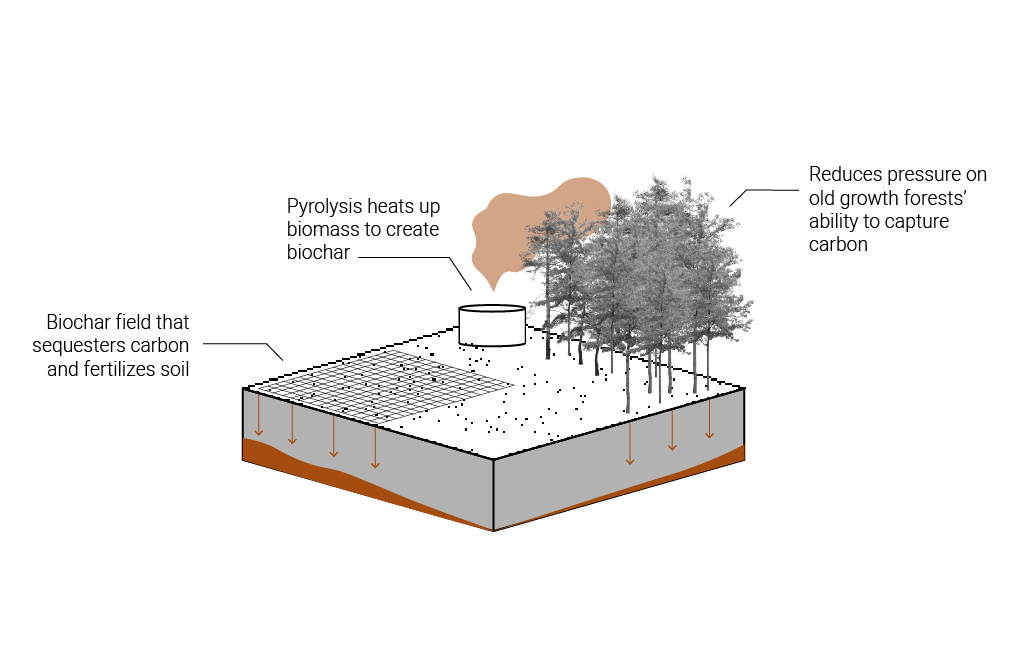
BIOCHAR APPLICATION. Biochar is a charcoal that stores nutrients and sequesters carbon. Organic matter from forestry waste is pyrolyzed with little oxygen, which emits heat that can be used for clean energy. Biochar can sequester carbon stably for up to thousands of years and can enhance soil fertilization and water retention, which might be beneficial in a hotter climate.
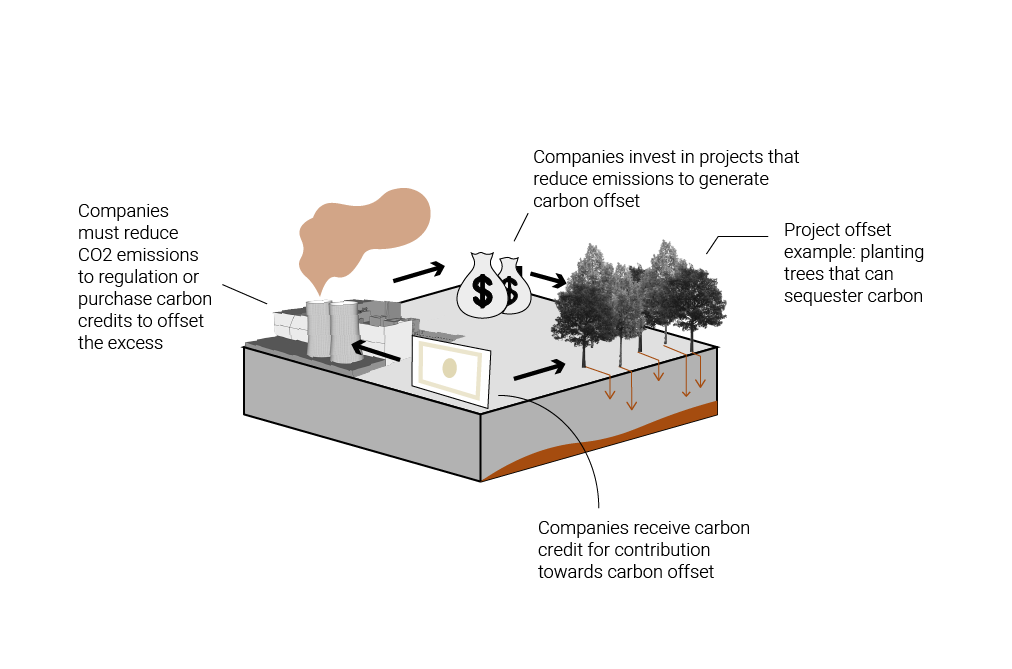
CARBON CREDITS. Carbon offset credits can help hold corporations accountable with respect to emissions. Under a credit system, emissions become an internal cost of doing business. Companies invest in carbon sequestration projects, which then allows them to purchase credits that can be applied towards their emissions cap or sold to another company.